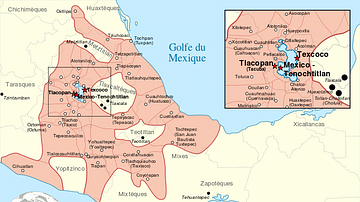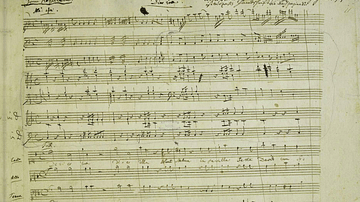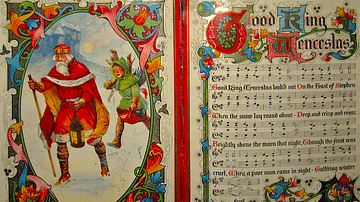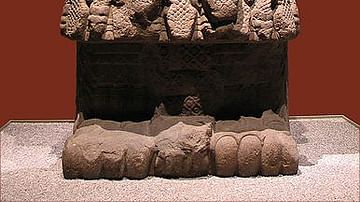Search
Search Results

Image
Map of the Aztec Empire, c. 1427–1521 - The Rise and Fall of Mesoamerica’s Warrior Kings
This map illustrates the origins and territorial expansion of the Aztec Empire in Mesoamerica between the 14th and 16th centuries. Emerging from a network of Nahua-speaking city-states in central and southern Mexico, the empire rose to dominate...

Image
Aztec Empire
A map indicating the maximum extent of the Aztec civilization which flourished between c. 1345 and 1521 CE in what is now Mexico. The three major cities which formed the Aztec Triple Alliance were Tenochtitlan, Texcoco and Tlacopan.

Image
Aztec Ceremonial Knife
An Aztec ceremonial knife with a cedarwood handle and flint blade. The figure of the handle is covered in turquoise and shell mosiac and represents an Aztec Eagle knight. 1400-1521 CE. (British Museum, London)

Image
Aztec Eagle Warrior
An almost life-size terracotta Aztec Eagle Warrior, one of the elite warrior groups in the Aztec military. 13-15th century CE, from Tenochtitlan. (National Museum of Anthropology, Mexico City)

Image
Mozart's Music for his Requiem
A facsimile sheet of the music handwritten by Wolfgang Amadeus Mozart (1756-1791) of the composer's Requiem (1791).

Image
Good King Wenceslas Carol Music
A 1913 biscuit tin showing Good King Wenceslas, the Bohemian duke and saint Wenceslaus I (r. 921-935), and the music for the Christmas carol of that name. The lyrics were written by John Mason Neale (1818-1866). Tin made by Hudson, Scott...

Image
The Holly & the Ivy Sheet Music
A page of sheet music for the Christmas carol The Holly and the Ivy. From a 1926 issue of the Radio Times magazine.

Definition
Coatlicue
Coatlicue (pron. Co-at-li-cu-e) or 'Serpent Skirt' was a major deity in the Aztec pantheon and regarded as the earth-mother goddess. Coatlicue is represented as an old woman to symbolise the antiquity of earth worship. Coatlicue was the patron...

Definition
Tezcatlipoca - The Greatest of Aztec Gods
Tezcatlipoca (pron. Tez-ca-tli-po-ca) or 'Smoking Mirror' in Nahuatl was one of the most important gods in Postclassical Mesoamerican culture and particularly important for the Toltecs and the Aztecs, especially at Texcoco. He was an invisible...

Image
Aztec Double-Headed Serpent (Detail)
A detail of the celebrated Aztec double-headed serpent. It is made from wood covered in turquoise mosaic, spondylus (red) and conch (white) shell. The eyes would have been rendered with inlay, probably of iron pyrite. The piece is believed...